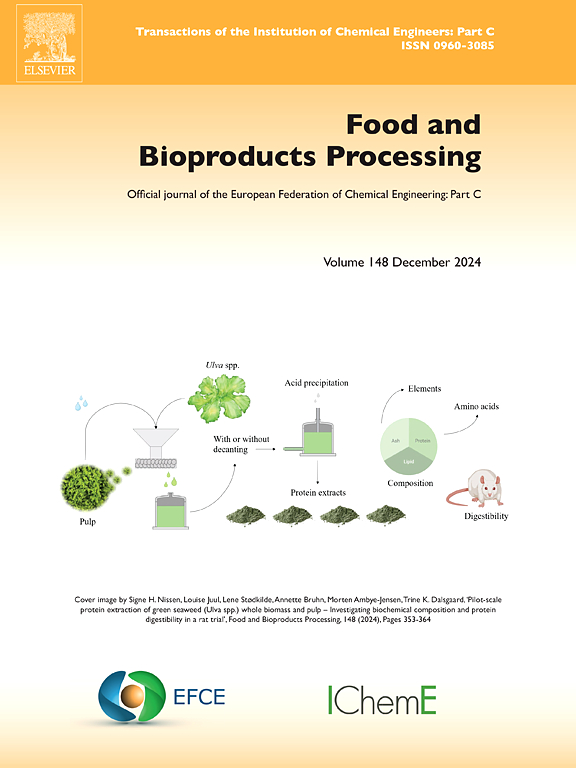Prediction and optimization of the temperature distribution in different food products for choosing a suitable geometry in a microwave system
IF 3.4
2区 农林科学
Q2 BIOTECHNOLOGY & APPLIED MICROBIOLOGY
引用次数: 0
Abstract
This study investigated temperature distribution in different food products, microwave oven geometry, and combination heating of MW with direct heat transfer. This research has been done by the finite element numerical method was used to discretize the equations using the COMSOL Multiphysics software. A comparison of 2D and 3D MW simulations showed that 2D modeling of cooking with MW gives completely unacceptable results. In MW cooking, dielectric material temperature is not affected by convection heat transfer around the dielectric material. To prevent cold spots in any part of the food during transportation, it is important to have a homogeneous temperature distribution in the MW. Different inlet surface areas of electromagnetic waves were compared and the maximum average temperature was obtained when the opening width of MW wave entrance was equal to the dielectric medium. If the entrance area of the waves was larger than the dielectric size then the temperature distribution becomes less homogenous. The height of wave entrance of the MW was also considered and when the opening height from the bottom of the MW was equal to the wavelength, then the maximum temperature is obtained.
预测和优化不同食品在微波系统中的温度分布,以选择合适的几何形状
研究了不同食品的温度分布、微波炉的几何形状以及微波与直接传热的组合加热。本文采用有限元数值方法,利用COMSOL Multiphysics软件对方程进行离散化。二维和三维MW模拟的比较表明,用MW进行烹饪的二维建模得到了完全不可接受的结果。在微波蒸煮中,介电材料的温度不受介电材料周围对流传热的影响。为了防止在运输过程中食物的任何部分出现冷点,重要的是要在仓库中保持均匀的温度分布。对比了不同的电磁波入口表面积,得到了毫米波入口开口宽度等于介质宽度时的最高平均温度。如果波的入口面积大于介质尺寸,则温度分布变得不均匀。同时考虑了毫米波的入口高度,当毫米波底部的开口高度等于波长时,得到了最高温度。
本文章由计算机程序翻译,如有差异,请以英文原文为准。
求助全文
约1分钟内获得全文
求助全文
来源期刊

Food and Bioproducts Processing
工程技术-工程:化工
CiteScore
9.70
自引率
4.30%
发文量
115
审稿时长
24 days
期刊介绍:
Official Journal of the European Federation of Chemical Engineering:
Part C
FBP aims to be the principal international journal for publication of high quality, original papers in the branches of engineering and science dedicated to the safe processing of biological products. It is the only journal to exploit the synergy between biotechnology, bioprocessing and food engineering.
Papers showing how research results can be used in engineering design, and accounts of experimental or theoretical research work bringing new perspectives to established principles, highlighting unsolved problems or indicating directions for future research, are particularly welcome. Contributions that deal with new developments in equipment or processes and that can be given quantitative expression are encouraged. The journal is especially interested in papers that extend the boundaries of food and bioproducts processing.
The journal has a strong emphasis on the interface between engineering and food or bioproducts. Papers that are not likely to be published are those:
• Primarily concerned with food formulation
• That use experimental design techniques to obtain response surfaces but gain little insight from them
• That are empirical and ignore established mechanistic models, e.g., empirical drying curves
• That are primarily concerned about sensory evaluation and colour
• Concern the extraction, encapsulation and/or antioxidant activity of a specific biological material without providing insight that could be applied to a similar but different material,
• Containing only chemical analyses of biological materials.
 求助内容:
求助内容: 应助结果提醒方式:
应助结果提醒方式:


